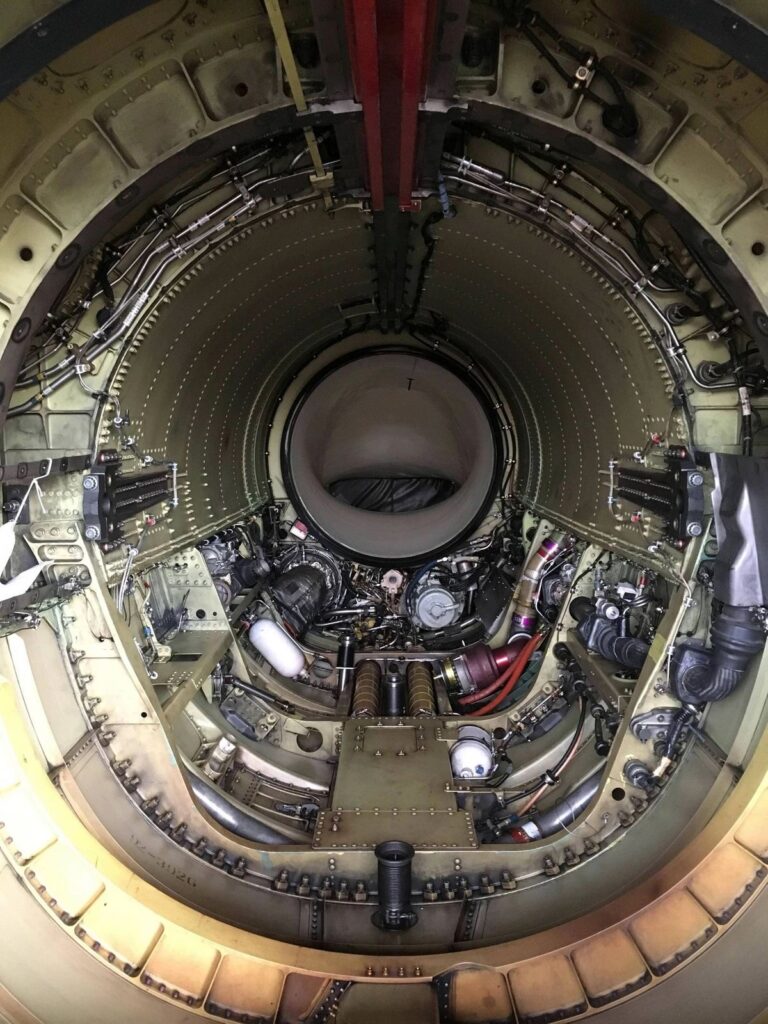
F-16 Engine Bay
The F-16 Fighting Falcon, one of the most widely used multirole fighters in the world, is powered by a single engine housed in a compact yet carefully designed engine bay. This section of the aircraft is critical not only for propulsion but also for maintenance accessibility, survivability, and integration with the aircraft’s airframe. Understanding the engine bay of the F-16 gives insight into why the fighter has remained so reliable and adaptable since it first entered service in the late 1970s.
At its core, the F-16 is powered by either the Pratt & Whitney F100 or the General Electric F110 turbofan engine, depending on the variant and customer requirements. Both engines are afterburning turbofans capable of producing thrust in excess of 28,000 pounds when in full afterburner. To house such powerful machinery, the F-16’s engine bay was designed with a focus on strength, airflow management, and ease of engine change. The bay is located in the rear fuselage and makes up a significant portion of the aircraft’s structure, tapering toward the exhaust nozzle.
The engine bay is lined with heat-resistant materials to withstand the extreme temperatures generated by the afterburner and exhaust plume. It also incorporates fire detection and suppression systems, which are vital in combat conditions. The airflow through the bay is carefully managed to keep temperatures within safe limits. Air enters the engine through the aircraft’s chin-mounted intake, flows into the compressor, and then through the combustion stages before exiting as high-speed exhaust. The bay provides the structural housing that holds this process together, while minimizing drag and preserving the aircraft’s agility.
A major advantage of the F-16’s engine bay design is its emphasis on maintainability. Unlike twin-engine fighters that require more complex access points, the single-engine layout of the F-16 allows for relatively straightforward engine removal and replacement. In field conditions, a trained crew can swap out an engine in a matter of hours. This capability is especially valuable for air forces operating in austere environments or during high-tempo operations. The design includes removable panels and quick-disconnect systems for fuel, hydraulics, and electrical connections, streamlining the process.
Another key feature of the F-16 engine bay is its integration with the fuselage fuel system. Fuel tanks are arranged around and near the engine bay, which makes efficient use of space but also requires careful engineering to prevent leaks or vulnerabilities. Protective materials and firewalls separate the fuel system from the hottest parts of the engine, adding a layer of safety.
The bay is also a factor in the aircraft’s survivability. Because the F-16 is a single-engine jet, damage to the engine area can be catastrophic. To mitigate this risk, the engine bay structure is reinforced, and the fire suppression system is designed to quickly address emergencies. In addition, the relatively small cross-section of the F-16 helps reduce its target profile, lowering the chances of a direct hit on the engine.
In summary, the F-16 engine bay is a blend of compact engineering, maintainability, and durability. It houses some of the most powerful fighter engines in the world while allowing for quick servicing and reliable performance in combat. This balance of power and practicality has played a major role in making the F-16 one of the most successful fighter aircraft of all time


